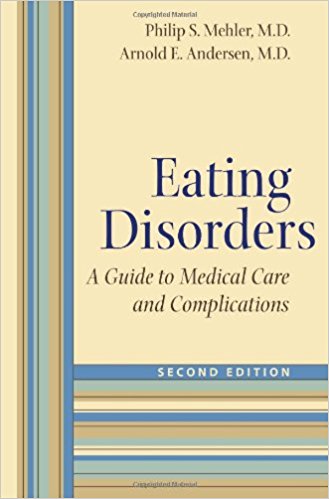
(Philip Mehler, MD, FAED and Arnold Anderson, MD, Editors. Paperback, $35; hardcover, $73. Baltimore, MD: Johns Hopkins University Press, 2017.)
Prominent medical complications and an expanded role for medical assessment set eating disorders treatment apart from the treatment of most other mental health conditions. This exceptionally useful, mid-sized volume addresses these issues both in broad strokes and in detail, and would be a useful addition to any eating disorder clinician’s bookshelf.
The book begins with general chapters addressing eating disorder diagnosis, medical assessment, and nutritional rehabilitation. The coverage of the most basic topics is brief, which seems desirable for a volume with this specific focus. Then, in-depth coverage of specific, important topics of common interest to eating disorder clinicians follows. Many types of medical complications of eating disorder are covered in detail, organ system by organ system. Other chapters address medical issues specific to athletes and to males with eating disorders. Another chapter comments on medical-legal issues relative to the medical complications of eating disorders.
A unique and particularly valuable contribution in this book covers the psychotherapeutic use of medical information in eating disorder treatment. While medical information plays a role early in family-based therapy, its use is not emphasized much in other therapies, and this chapter highlights its possible uses.
Each chapter is prefaced by a list of frequently asked questions, which the chapter then addresses. Descriptive cases help illuminate clinical scenarios.
All in all, this is a highly valuable book. It will serve as a very useful reference for established and experienced eating disorders professionals and as a valuable information source for non-medical professionals working with people who have eating disorders. I think a common role for the volume will be its use in training new providers entering the field. Thus, this volume will serve both as a reference work for many professionals, and as an introduction to an important aspect for new clinicians entering the field.

